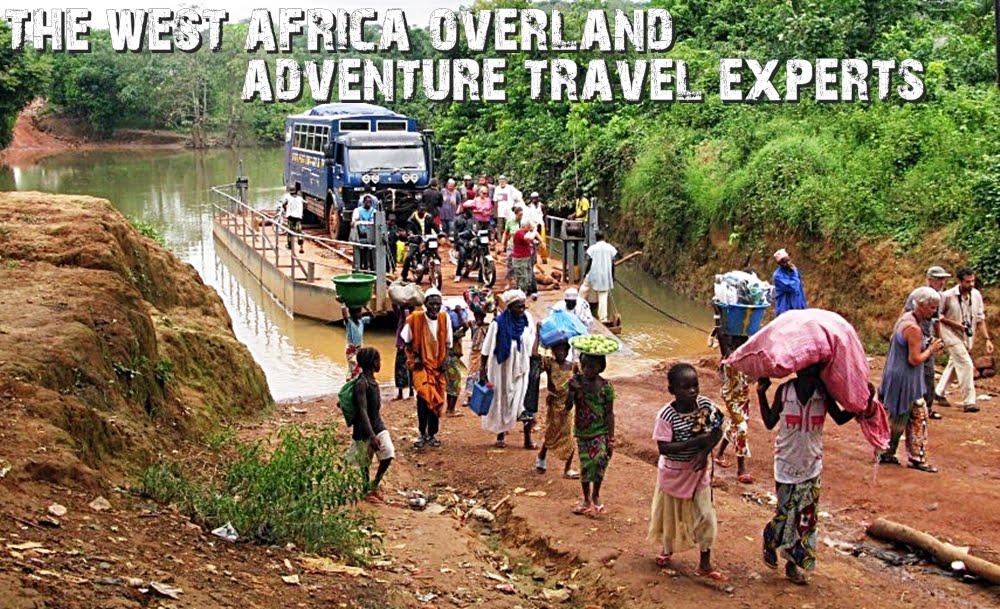We started our northbound trips in Accra at the beginning of February, and it felt good to be back on the road after a few sweaty weeks in southern Ghana getting Aminah and her equipment ready for the return journey north back to the UK.
A warm welcome to John, Pooley, Nathan, Douglas, Steve, Spencer, Alice, Alice, Alexi, Zoe, Jess, Pauline and Emilia, who joined us and Jan who had been with us since our Accra to Ouagadougou trip a few weeks ago.
Above is the Kwame Nkrumah memorial which some of our passengers visited in Accra, built in memory of Ghana's first President, an influential pan-African independence campaigner.
Above is a primary school class some of us visited in the district of Nema, as part of a tour to see daily life in this residential suburb. Below, chameleons for sale in the local market.
Many of us went on to visit Jamestown, and saw the fort, fishing boats and the lighthouse .
We also went to see the world famous coffin makers at work, and saw more on our first drive day, along the coast to Elmina. These coffins are real works of art; some reflect the profession of the deceased, others are clan totems, whilst some are representative of African proverbs.
The coffins are traditionally used by the Ga people, and are occasionally made to order to be exported worldwide!
Below are pirogue makers whom we saw on our way along the coast to Elmina. The base is made from a tree trunk, often with planks added along the sides to increase the size.
Elmina Castle, also known as St Georges Castle, was built by the Portugese in the 15th century and is thought to be the oldest European building in sub-Saharan Africa. It has a long and tragic history as a slaving fort, though it's setting is stunning nestled among a busy fishing community.
We also visited Cape Coast Castle, again a former slaving fort, and the first centre of British administration in what was then the Gold Coast. Another brutal history, with a stunning sea front setting.
Kakum National Park protects one of the few remaining belts of pristine rainforest in Ghana, which we visited on the canopy walkway, above.
Below, the beach we camped on for a few nights, a truly beautiful spot .
A days drive north brought us to the Ashante stronghold of Kumasi, dominated by Kejetia Market, one of the largest open air markets in West Africa. It sprawls across the city as far as the eye can see; its hustle, bustle, noise, colour and smells providing a real assault on the senses. Every product imaginable is available, as can be seen above!
The truck below has unloaded empty crates, ready to be filled with produce.
Below are some fabrics for sale in the market, some of it Kente cloth. It's made locally, predominantly by the Akan ethnic group, and was initially worn only by royalty, though it is now much more widespread.
Above is Fuller Falls, where we camped for the night and enjoyed washing off the sweat and dust from the drive day up from Kumasi, though its flow has been much reduced by a dam above.
Below, ladies who came to the falls to do laundry and collect water during our visit.
We also visited Kintampo Falls on our drive north through Ghana; Alexi is pictured below.
Above and below is Larabanga Mosque, believed to be the oldest mosque in Ghana located close to the entrance for Mole National Park. Locals believe the mosque dates from the 15th century.
Above is the main waterhole in Mole National Park, located just below where we camped for 2 nights. During our time at Mole we went on guided walking and vehicle safaris, and also had the chance for some down time by the camp swimming pool. The elephants in the park are well habituated to groups on foot, allowing for some very close encounters!
Above, Pooley, Jess, Nathan, Alice, Douglas, Steve and Zoe.
The dry season is a great time to be in Mole National Park; with the countryside dry and dusty, and temperatures climbing, the wildlife comes regularly to the waterholes to drink or cool off.
A hot and dry drive day from Mole took us further north in Ghana for our last bush camp before the Burkina Faso border. We visited leather tanners, basket makers and a mud brick cathedral.
Our last stop in Ghana was a visit to the crocodiles in Paga, though they were feeling the heat, too and not willing to come out of the water to feast on a live chicken like they usually do!
Our next blog post, through Burkina and into Cote d'Ivoire, will be out in about a week's time.
Many thanks to passenger Alexi for the photos, some great shots!


















































